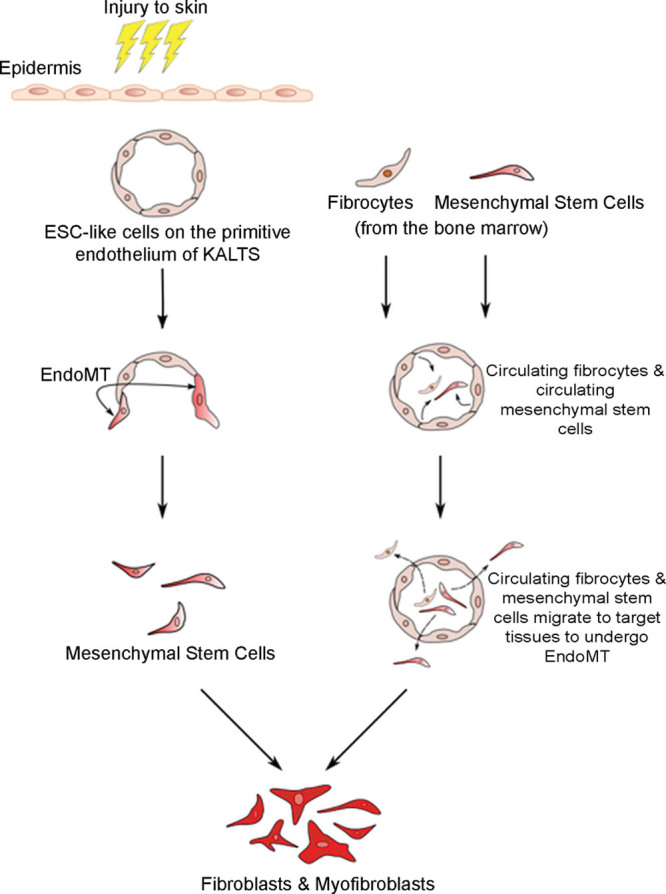Fig. 2.

A proposed model of keloid disorder demonstrating the potential source of dysregulated fibroblasts and myofibroblasts, characteristic of keloid lesions. Following an injury, the embryonic stem cells (ESC)-like cells on the endothelium of the microvessels give rise to mesenchymal stem cells (MSCs) through a process of endothelial-to-mesenchymal transition (Endo-MT) induced by cytokines such as transforming growth factor-β1 (TGF-β1). These MSCs undergo differentiation into aberrant fibroblasts and myofibroblasts, characteristic excessive extracellular matrix deposition, and fibrosis seen in keloid lesions. This process is regulated by the renin-angiotensin system (RAS) and the immune system/inflammatory process. Through Endo-MT, these aberrant fibroblasts and myofibroblasts may also be derived from circulating MSCs and fibrocytes from the bone marrow which migrate to the target tissues.
